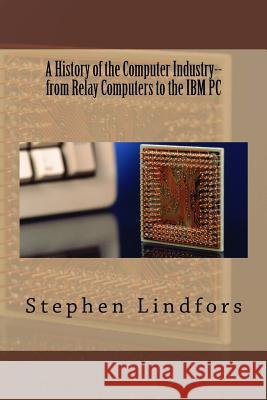A History of the Computer Industry: From Relay Computers to the IBM PC » książka
A History of the Computer Industry: From Relay Computers to the IBM PC
ISBN-13: 9781514690802 / Angielski / Miękka / 2016 / 388 str.
A History of the Computer Industry: From Relay Computers to the IBM PC
ISBN-13: 9781514690802 / Angielski / Miękka / 2016 / 388 str.
(netto: 60,79 VAT: 5%)
Najniższa cena z 30 dni: 63,83
ok. 16-18 dni roboczych
Bez gwarancji dostawy przed świętami
Darmowa dostawa!
The book is a short history of the computer industry, starting with relay computers and ending with the IBM PC, introduced in 1981. Before digital computers, there were digital switching systems, used by the phone companies, made with relays. With the earliest digital computers, users found relays to be just too slow, and vacuum tubes were mainly used in analog devices, like radios. But soon digital counters were invented, showing that vacuum tubes had digital uses also. But vacuum tubes had their own problems, producing too much heat and failing at random. Vacuum tube computers also used too much electric power and too much floor space. In 1947, a new device was invented that would solve those problems. It was the transistor, invented at Bell Labs by Shockley, Bardeen and Brattain. In a few years, computer companies were starting to use transistors in their newest machines. By 1955, just about all of them had given up on vacuum tubes and switched to transistors. Then integrated circuits were invented, allowing many transistors to be included on one chip. Integrated circuits led to the first microprocessor, the 4004, from Intel. A few years later, the first PC was invented, by Steve Wozniak, using a microprocessor. That was in 1975. Six years later, IBM introduced their PC. Before the IBM PC, almost everyone who used a computer used it either remotely, connecting with a phone line or a cable, or they used batch processing. The book includes two chapters about important people in the industry, plus a glossary, a bibliography, an index and footnotes.
Zawartość książki może nie spełniać oczekiwań – reklamacje nie obejmują treści, która mogła nie być redakcyjnie ani merytorycznie opracowana.











